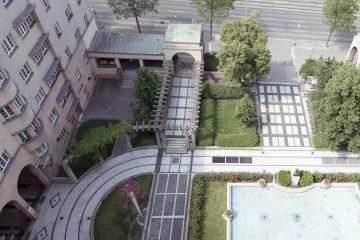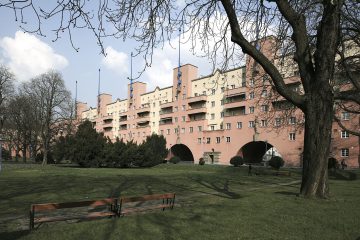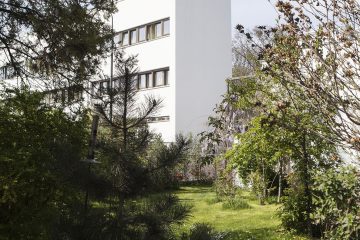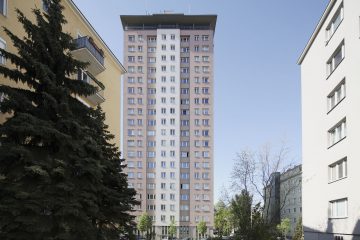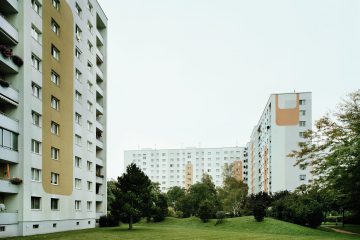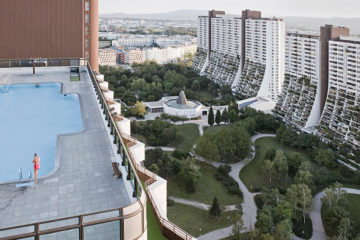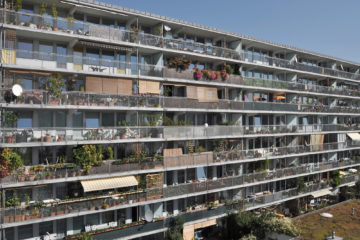Vienna’s social housing policy originated from a reform program started in the 1920s. In order to overcome the deplorable housing conditions inherited from the Hapsburg Empire, a socialist government built more than 65,000 low-cost apartments in large housing estates. This program known as “Red Vienna” included a generous social infrastructure, and well-known architects designed many of the estates. Many municipal housing estates are now listed landmarks, including the Karl-Marx-Hof and George-Washington-Hof. After a civil war and a fascist coup d’etat in 1934, the social housing program came to an abrupt end, and when Austria was annexed to Nazi Germany in 1938, thousands of Jewish tenants and political opponents had their apartments confiscated. In 1945, as a result of the war, which destroyed 20 percent of the total housing stock, Vienna—like Berlin—was divided into four sectors. The city immediately restarted its social housing program. Although these postwar estates seldom achieved the high architectural quality of the 1920s, the quantity of built projects was nonetheless impressive, with up to 10,000 municipal rental units built annually. However, the critique of these often monotonous prefab blocks led to greater architectural diversity in the 1970s, with experimental buildings and theme-oriented estates like the terraced towers of Alt-Erlaa, which addressed new societal challenges.
The fall of the “Iron Curtain”—situated less than 70 kilometers from Vienna—led to a wave of immigration after 1989 and a large increase in the city’s population. In order to develop higher-quality housing and to stabilize building costs, the city introduced “developer competitions,” based on an innovative four-pillar system: each subsidized housing project—some 7,000 to 13,000 apartments annually—are judged by an interdisciplinary jury along four sets of criteria: social sustainability, planning, ecology, and costs. The introduction of this competitive system has led to an increase in the social and technical standards of new housing, while reducing construction costs. Since 1984, land for new housing estates has been acquired and developed by the city-owned Housing Fund, and most new apartments are now built and managed by limited-profit developers, in the form of subsidized rental apartments. Residents’ participation both in planning and in management is promoted. Floor plans include traditional one- to five-room units, as well as special housing like cohousing or assisted housing, reflecting demographic changes and lifestyle choices. Rents are stabilized, and rental contracts are unlimited. The annual budget for Viennese housing subsidies amounts to about 600 million euros. Today, 62 percent of the population lives in subsidized housing, including 220,000 municipal rental units and another 200,000 units owned by limited-profit housing associations.
The current housing program includes a variety of housing types: large inner-city brownfield developments, smaller infill projects, but also densified low-rise housing in peripheral areas. Today, 70 to 80 percent of all new housing construction in Vienna is subsidized, and this gives the city a strong influence on the development of its quantities, distribution, and qualities.
Text: Wolfgang Förster

